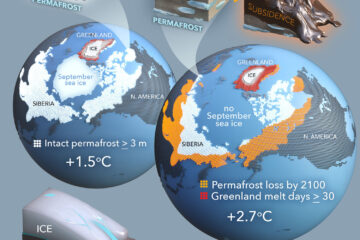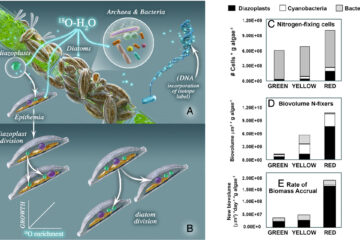Coupling Between and Among Ammonia Oxidizers and Nitrite Oxidizers in Grassland Mesocosms Submitted to Elevated CO2 and Nitrogen Supply
Many studies have assessed the responses of soil microbial functional groups to increases in atmospheric CO2 or N deposition alone and more rarely in combination. However, the effects of elevated CO2 and N on the (de)coupling between different microbial functional groups (e.g., different groups of nitrifiers) have been barely studied, despite potential consequences for ecosystem functioning. Here, we investigated the short-term combined effects of elevated CO2 and N supply on the abundances of the four main microbial groups involved in soil nitrification: ammonia-oxidizing archaea (AOA), ammonia-oxidizing bacteria (AOB), and nitrite-oxidizing bacteria (belonging to the genera Nitrobacter and Nitrospira) in grassland mesocosms. AOB and AOA abundances responded differently to the treatments: N addition increased AOB abundance, but did not alter AOA abundance. Nitrobacter and Nitrospira abundances also showed contrasted responses to the treatments: N addition increased Nitrobacter abundance, but decreased Nitrospira abundance. Our results support the idea of a niche differentiation between AOB and AOA, and between Nitrobacter and Nitrospira. AOB and Nitrobacter were both promoted at high N and C conditions (and low soil water content for Nitrobacter), while AOA and Nitrospira were favored at low N and C conditions (and high soil water content for Nitrospira). In addition, Nitrobacter abundance was positively correlated to AOB abundance and Nitrospira abundance to AOA abundance. Our results suggest that the couplings between ammonia and nitrite oxidizers are influenced by soil N availability. Multiple environmental changes may thus elicit rapid and contrasted responses between and among the soil ammonia and nitrite oxidizers due to their different ecological requirements.


